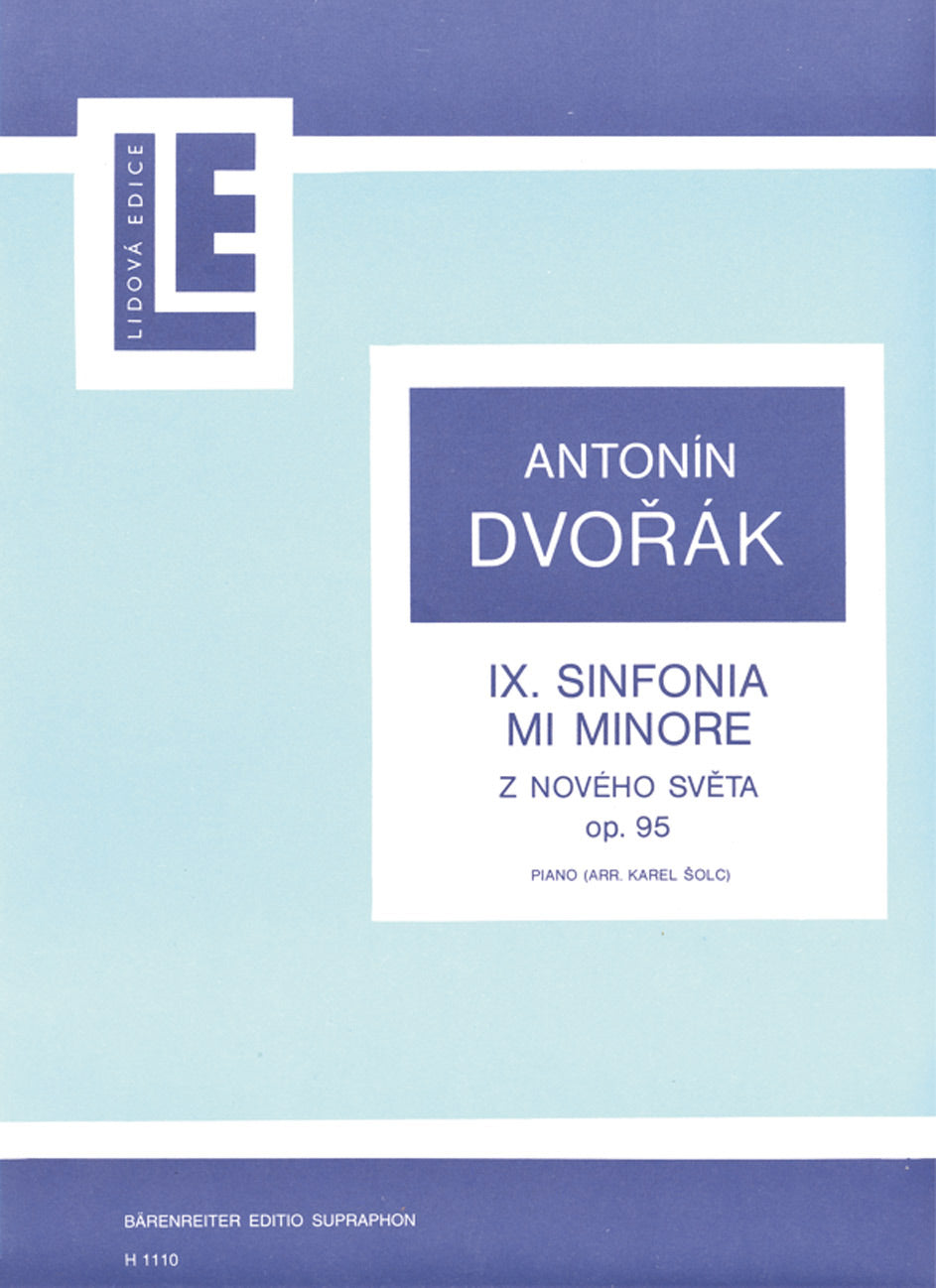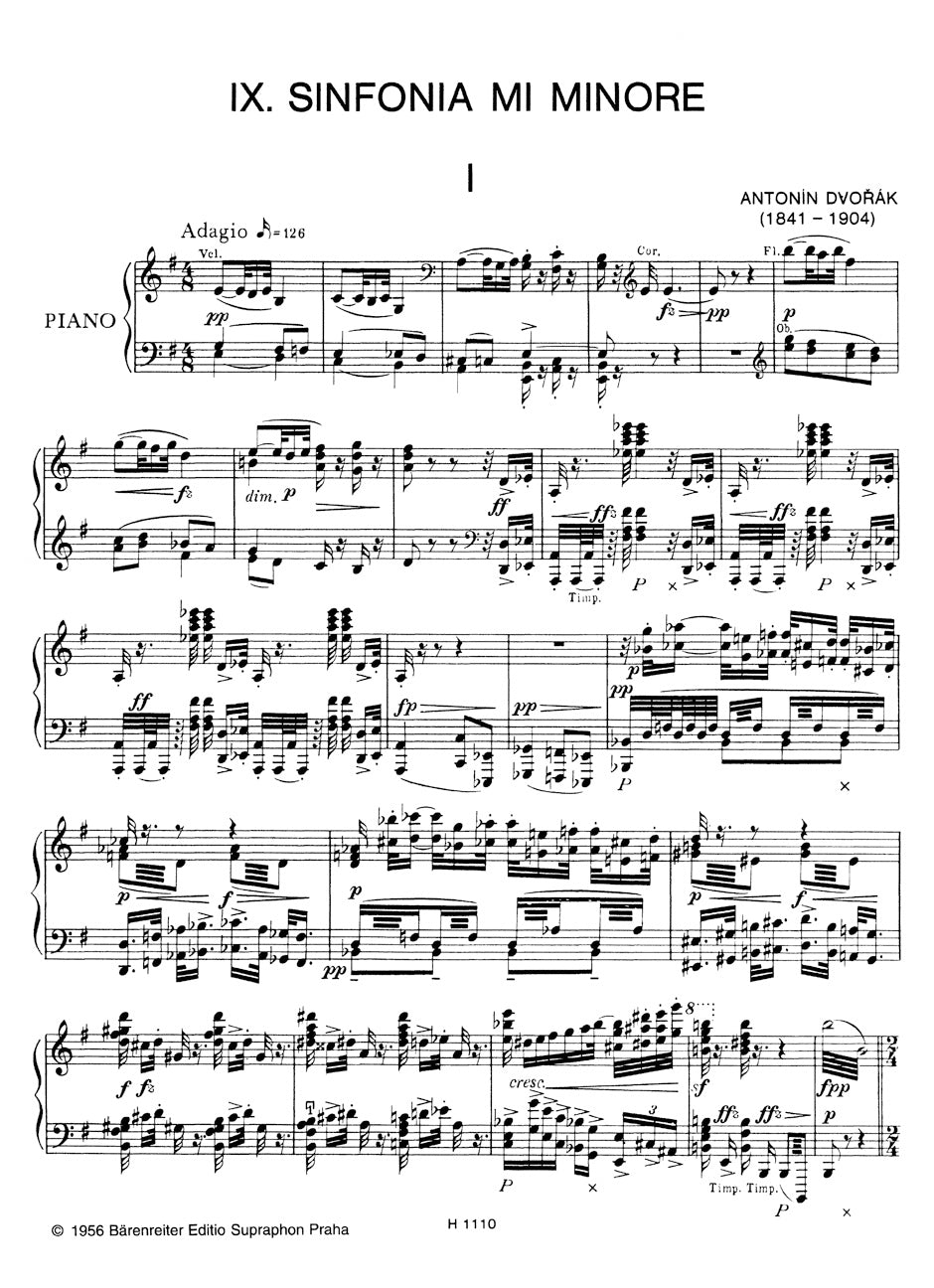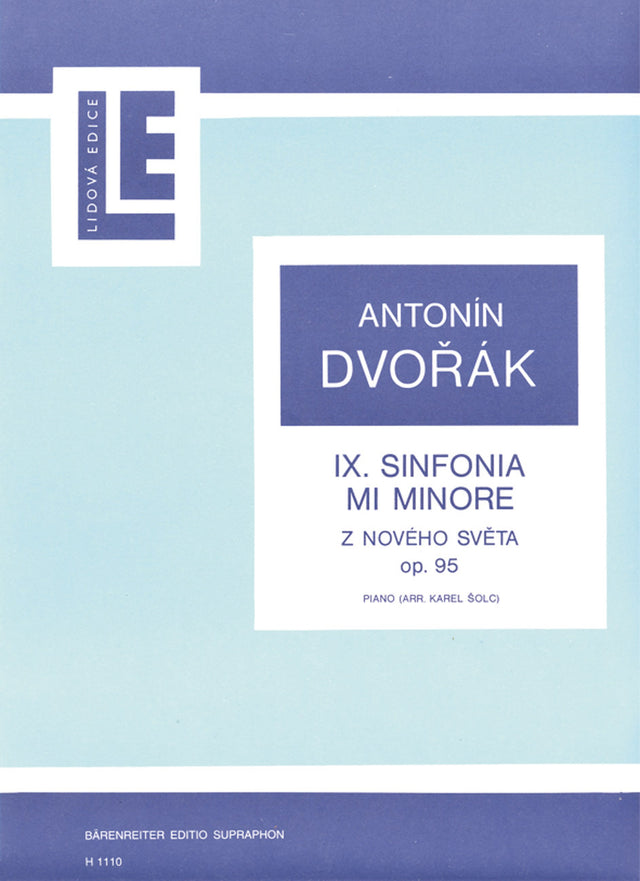Dvořák: Symphony No. 9 in E Minor, Op. 95 (arr. for piano)
Expected to ship in about a week.
- Composer: Antonín Dvořák (1841-1904)
- Arranger: Karel Šolc
- Instrumentation (this edition): Piano
- Originally for: Orchestra
- Work: Symphony No. 9 in E Minor ("From the New World"), B. 178, Op. 95
- ISMN:
- Size: 9.1 x 12.1 inches
Description
Antonin Dvořák (1841-1904) began working on his Symphony No. 9 in E Minor, Op. 95 "From the New World" in the first few months of 1893, during his stay in the USA where, in the years 1892-1895, he was director of the National Conservatory of Music in New York. While he did not leave behind any programme description for the symphony, he, himself, stated that he had at that time been greatly influenced by reading the epic poem The Song of Hiawatha by Henry Wadsworth Longfellow. Inspiration from the epic is cited both in connection with the celebrated Largo, describing the woodland burial of Minnehaha, and with the following Scherzo - an Indian ceremonial dance which here, however, also incorporates a Czech folk dance. Even in the last movement, Allegro con fuoco, written in sonata form like the first movement, Adagio. Allegro molto, the second subject is a reminiscence of a Czech folk melody. Dvořák's famous symphony is here published as a piano arrangement as part of the series " Popular Edition". Arranged for piano by Karel Solc.
Publishers use a lot of words to describe what they sell, and we know it can be confusing. We've tried to be as clear as possible to make sure you get exactly what you are looking for. Below are descriptions of the terms that we use to describe the various formats that music often comes in.
Choral Score
A score for vocalists that only contains the vocal lines. The instrumental parts are not there for reference. Generally, cheaper than a vocal score and requires multiple copies for purchase.
Facsimile
Reproductions of the original hand-written scores from the composer.
Full Score
For ensemble music, this indicates that the edition contains all parts on a single system (there are not separate parts for each player). In larger ensembles, this is for the conductor.
Hardcover
Hardbound. Generally either linen-covered or half-leather.
Orchestral Parts
Similar to a wind set, this is a collection of parts. In the case of strings, the numbers listed are the number of copies included, though generally these are available individually (often with minimum quantities required).
Paperback
When publishers offer multiple bindings (e.g. hardcover) or study scores, this is the "standard" version. If you're planning to play the music, this is probably what you want.
Performance / Playing Score
A score of the music containing all parts on one system, intended for players to share. There are not separate parts for each player.
Set of Parts
For ensemble music, this indicates that there are separate individual parts for each player.
Solo Part with Piano Reduction
For solo pieces with orchestra, this is a version that contains a piano reduction of the orchestra parts. For piano pieces, two copies are typically needed for performance.
Study Score
A small (think choral size) copy of the complete score meant for studying, and not playing. They make great add-ons when learning concertos and small chamber works.
Vocal Score
A score prepared for vocalists that includes the piano/organ part or a reduction of the instrumental parts.
Wind Set
For orchestral music, this is a collection of wind and percussion parts. The specific quantities of each instrument are notated.
With Audio
In addition to the printed music, the edition contains recordings of the pieces. This may be an included CD, or access to files on the internet.
With / Without Fingering (Markings)
Some publishers prepare two copies - a pure Urtext edition that includes no fingering (or bowing) suggestions and a lightly edited version that includes a minimal number of editorial markings.




